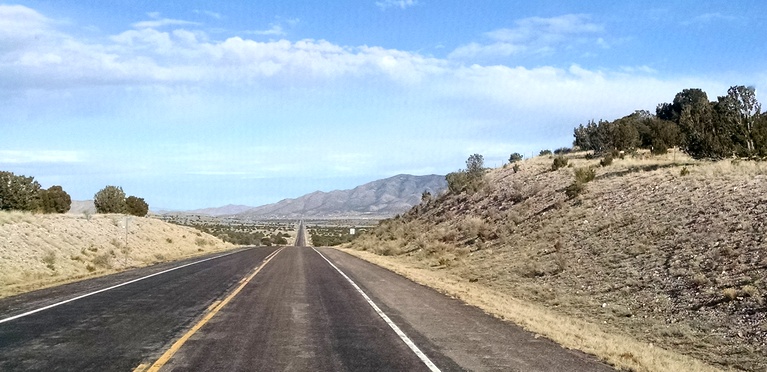

Another week, another telescope. The Very Large Array is a group of radio telescopes in a dry lake bed about 55 miles across at 7000 feet elevation. Each of the 27 dishes is 82 feet in diameter and weighs 235 tons. Every three to four months they are moved into one of four positions using a special transporter (that weighs 100 tons) that carries them along a set of railroad tracks that creates a single telescope that ranges from .6 miles (lowest resolution) to 22 miles (highest resolution) in diameter. The tracks are laid out in a Y shape and each arm is about 13 miles long.
The VLA is operated by the National Radio Astronomy Observatory which also has facilities in Green Bank, West Virginia. The array is named after Karl Jansky who is often credited with being the father of radio astronomy. He was the first person to discover radio waves coming from the center of our own Milky Way galaxy. A replica of the antenna Jansky used to make his discovery is at NRAO in Green Bank.
There are guided tours on weekends or you can take a self-guided walking tour as we did. This allows you to walk up to the base of one of the working dishes.

You can get a sense of scale from this picture. Each dish is 91 feet tall in its parked position (pointing straight up).
Work on the VLA started in 1973 and it was first used for data collection in 1980. All of the electronics have been replaced, even though the actual dish and mounts are original equipment.

And finally, as with many things in life, you should turn around sometimes and look at where you’ve been. This is the view looking eastward on US60 coming back down from about 6500 feet to about 5500 feet.